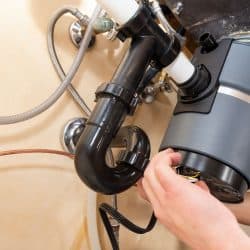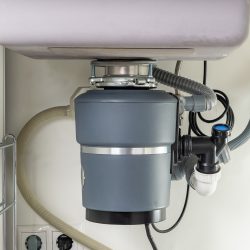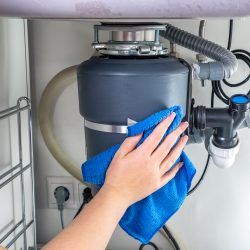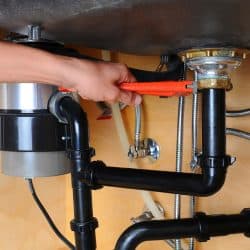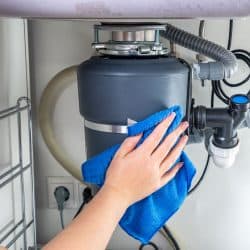Is your sink flooding with water? The water backing up into your sink is caused by either clogged garbage disposal or drain pipe. We have good news: it can be unclogged. We have researched the best ways to drain your clogged garbage disposal and wish to share it with you.
Unclog your waste disposal unit with these 3 easy to follow steps:
- Inspect your unit
- Clean with a mix of vinegar and baking soda
- Manually clear your drain with a plunger or a plumbing snake
In this article, we will elaborate further on these steps so you'll know exactly what to do to unclog your garbage disposer. We will also share some helpful tips on how to keep clogs from happening in the first place. If you wish to learn more, read on!
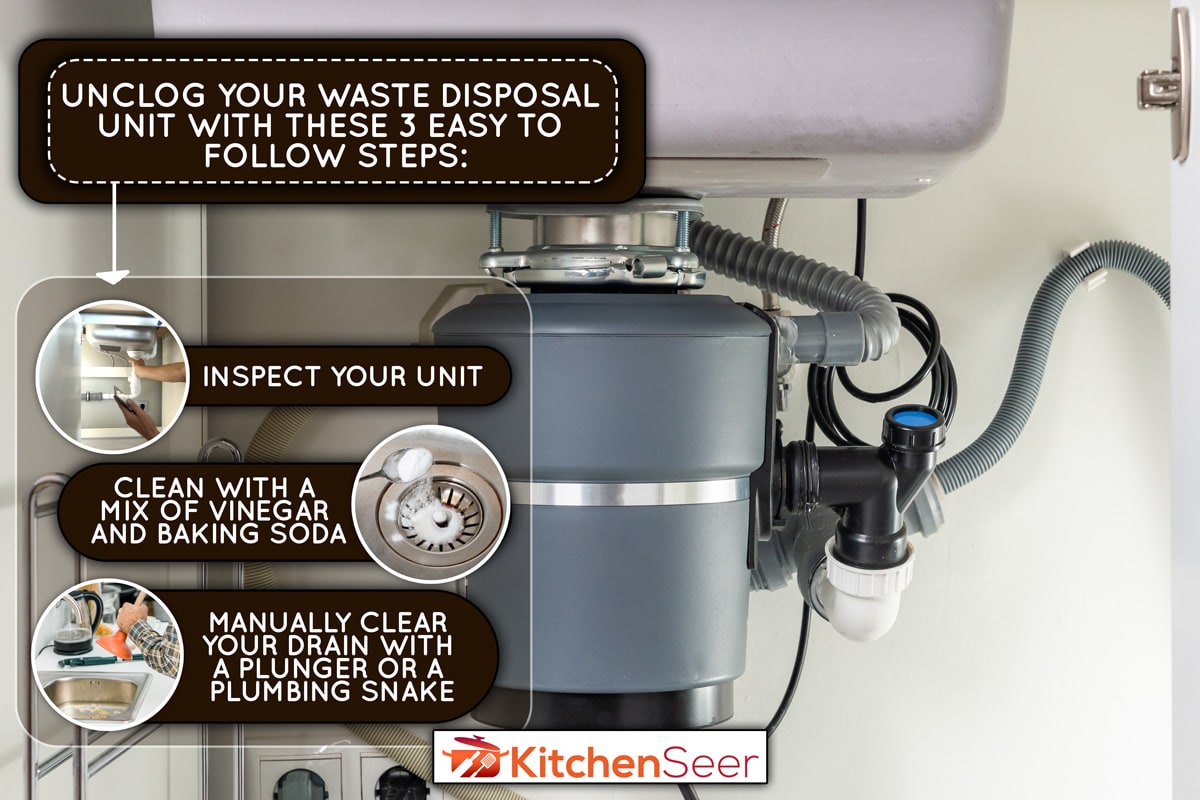
How To Unclog Garburator?
The most common reason for a garbage disposal not to drain properly is because of a clog. There are only 3 general things you need to do to clear the obstruction:
Inspect your unit.
Visually inspect your disposal unit first. For this, you can use a flashlight to help you see in the drain. If there is a visible obstruction, reach down and grab the blockage using a pair of tongs, or any elongated forceps-like equipment.
You can also tell if your unit is obstructed by the sound it makes. The motors of a clogged unit will make a humming sound but the impellers will not run.
Clean with vinegar and baking soda solution
Clogs can also happen with fat, oil, or grease (FOG) build-up. The best recourse for such cases is to make use of natural cleaners.
Mix well half a cup vinegar with a one-fourth cup baking soda, and pour into the drain pipe. Leave the mixture to work for 10 - 20 minutes. Pour hot water into the drain to rinse off the remaining build-up.
Before pouring the mixture, make sure the drain is clear of backed-up water. If using this natural cleaning solution does not work, then resort to the manual solution.
Caution: Do not use harsh chemicals to unclog your drains as it may affect the integrity of the pipes.
Manually clear your drain.
Before inserting anything down the unit, always make sure that the power to the drain is disconnected. The power supply is usually found under the sink. Even when the power has been turned off, never put your hands into the drain to clear the obstruction.
Use a plunger or plumber's snake
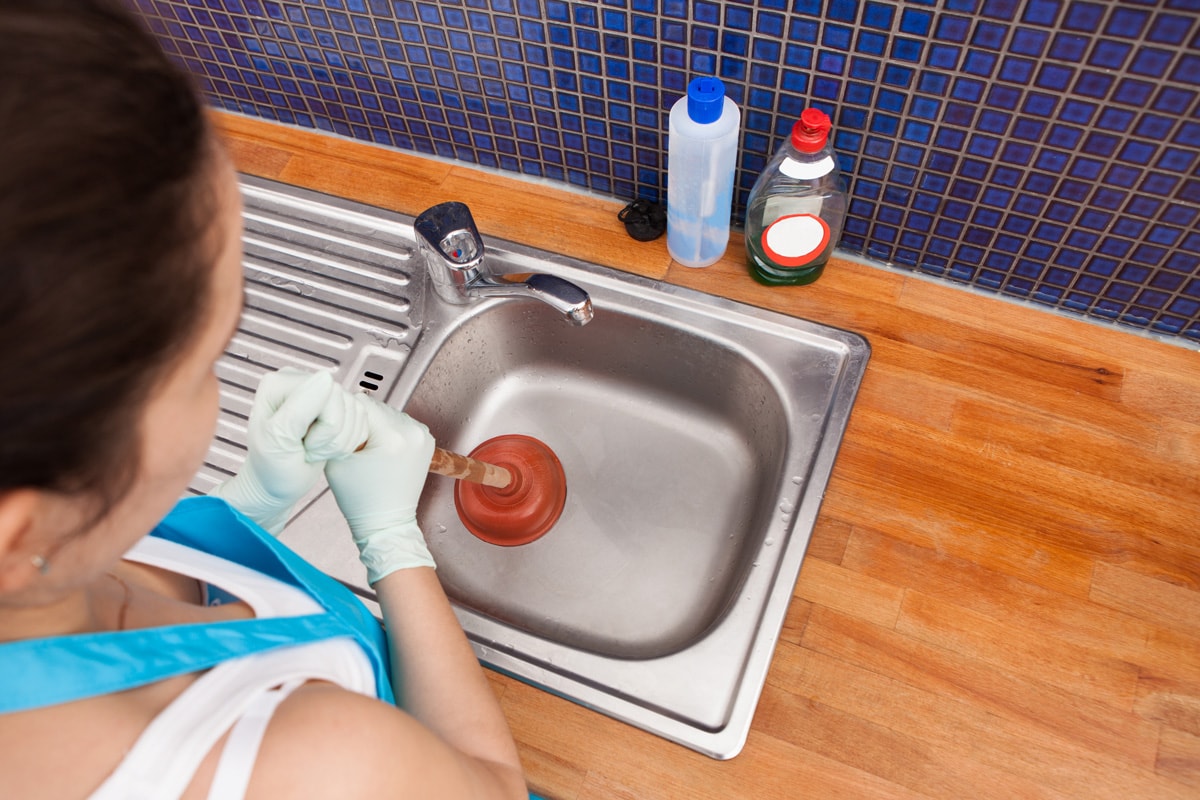
Using a plunger can be effective to get rid of clogs. Running a small amount of water to seal the edge of the plunger helps strengthen the suction. Keep in mind though, that plunging your sink might introduce dirty water to your dishwasher. So before anything else, clamp your dishwasher connection.
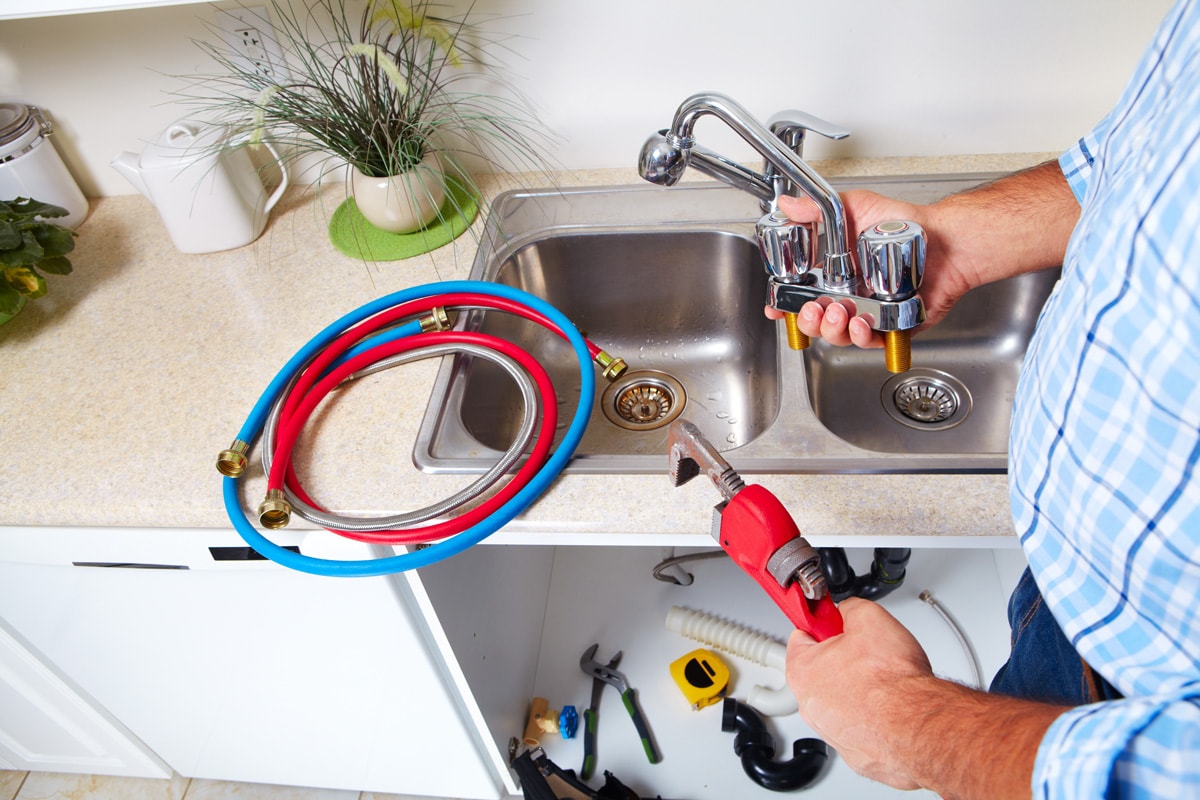
A more effective tool to dislodge obstructions than plungers is a plumbing auger also called a plumber's snake. But it can also be tricky to use. To use this cleaning device, follow these steps:
- Insert the head of the auger into the drain. Make sure the diameter of the device is not too wide for your drain.
- Run cold water while you twist and turn the device. Direct the line into the pipe at a steady pace.
- Keep the handle of the auger close to the opening of the drain. Less slack means better control.
- If you feel resistance, you may have reached the blockage. Break the obstruction by steadily pushing and pulling the line while turning the crank. Adjust your device if you hear a scratching sound
- Once there is less resistance, pull the auger out. Check its head for debris and remove it if you find any.
- Open the faucet to check if the blockage was cleared. If the obstruction still remains, consider calling the pros.
Check out this plumbing auger on Amazon
Turn the blades
Before manually rotating the blades, check the reset button. It is a red button that is usually located at the bottom of the disposal unit. If the button is sticking out, push it in.
If resetting the unit does not work, you can manipulate the blade in two ways:
1. Insert an Allen wrench in the flywheel hole at the bottom of the waste disposal unit.
Insert the wrench into the hexagonal hole. Make sure the hex-head is 1/4 inch (6.4mm) to fit the hole.
First, turn counterclockwise as far as you can, then go the other way around until it cannot turn anymore. Keep turning the wrench back and forth until you can go full circle. Do not be afraid to apply a little force. Turn the unit on and test if it is functioning as it should.
See this set of Allen wrench on Amazon
2. Spin the blades using a garbage disposal wrench.
Another option aside from the Allen wrench is to use an unjamming wrench. Stick the 2-pronged end down the drain until they touch the unit's drain. Spin the blades counterclockwise, then clockwise, until it spins freely. Spinning the blades using the wrench may require you to apply some force.
Remove the wrench and test run the unit. If the blades still won't run after clearing the obstruction, then replacing the motor might be required.
Click here to see this unjamming wrench on Amazon
Clear the P-Trap
If the waste disposal unit is free of obstruction but the water backs up to the sink, then you might have an obstructed P-Trap. You will need to clean your P-Trap, so follow these steps:
- Turn the sink faucet off. Place a bucket directly under the P-Trap before removing it.
- Unscrew the nut keeping the P-trap in place using an adjustable wrench. If the nut is not too tight, you can use a washcloth to loosen the nut.
- Clean the P-Trap by removing and dumping its contents into the bucket. Using a wet flexible wire brush, brush through the pipes until all food gunk has been removed.
- Screw the P-Trap tightly back into its place. Make sure the alignment is correct.
- To ensure that the P-Trap is sealed correctly, run the faucet water for at least 15 seconds. There should be no leaking water.
You might also want to read this article: How To Clean Garbage Disposal Trap And Drain
How to Avoid Clogged Garbage Disposal?
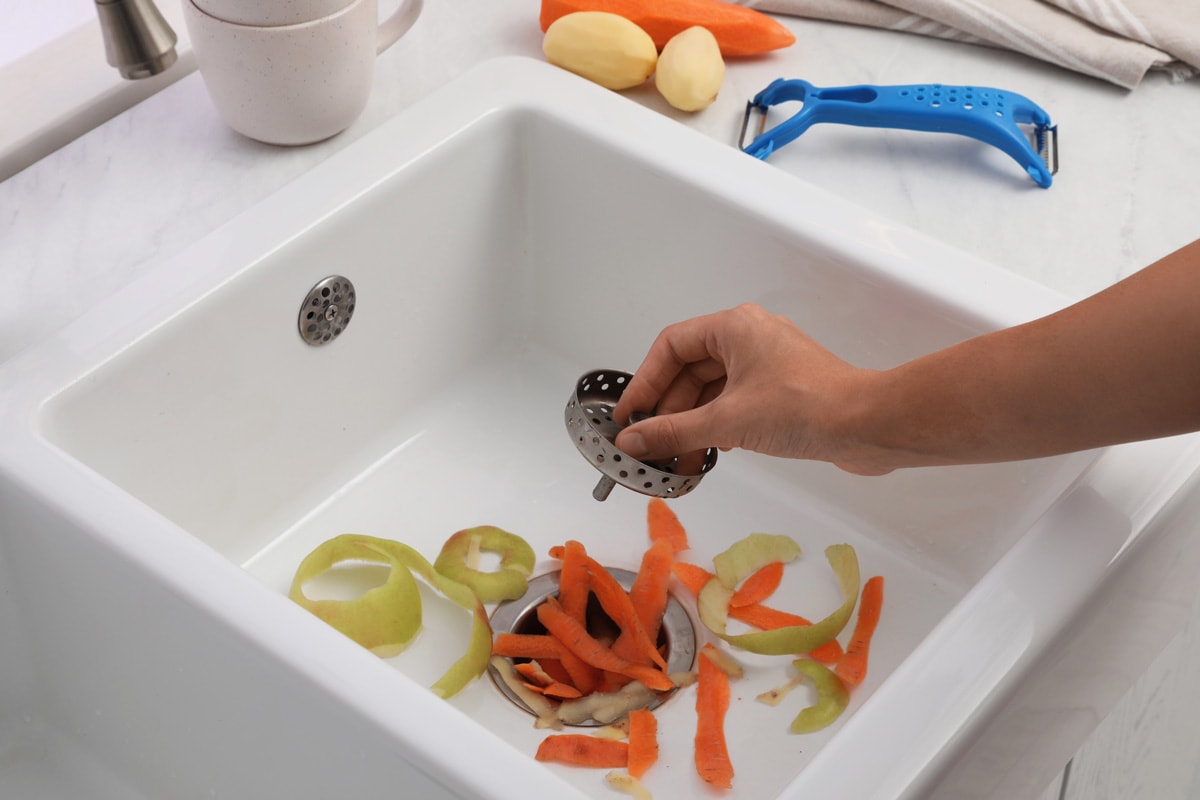
It's often said that an ounce of prevention is worth a pound of cure, and this is true when it comes to clogs as well. To avoid the hassle of a clogged food disposal unit, here is a list of good practices you can follow to stop the problem before it happens:
- Use enough water to flush food particles down the drain.
- Clean your P-Trap regularly. Once every 3 months is recommended to maintain this section of your pipes.
- The following list of food waste should not be thrown into the garbage disposal unit:
| Flagged Items | Reasons |
| Coffee grounds | Dense and paste-like after filter |
| Pasta, rice, and bread | Absorbs water and expands |
| Animal bones | Grinding big bones can damage the garbage disposal unit. |
| Nuts and shells | Hard nuts and shells can cause damage to the disposal unit as well. Grinding softer nuts can result in a pasty substance that can lead to clogs. |
| Pits and seeds | Pits and seeds are difficult to grind. |
| Onion layers | If not chopped into smaller pieces, the fibrous layer of onions can become a mesh-like material that can act as a trap. |
| Fibrous fruits and vegetables | The stringy material from vegetable stalks and peels can wrap around the grinder. |
| Potato peels | The thin slices of potato peels may slip and catch in the drain, or if ground, can turn into a sticky and starchy substance that can clog the drain |
| Fat, oil, and grease | FOG deposits thicken and build into drain clogs over time. |
| Non-biodegradable material | Waste materials like tissues and plastic wrappers must be kept out of the disposal unit. These materials are potential pipe blockage. |
Once in a while, we unintentionally introduce the items we enumerated as no-nos. Sometimes, food items like pasta and fibrous fruits and vegetables cannot be helped but thrown into the garbage disposal unit. This is okay in small amounts. Just remember to flush with enough water. Pits and seeds should be thrown into the trash bin.
How To Properly Use Garbage Disposal?
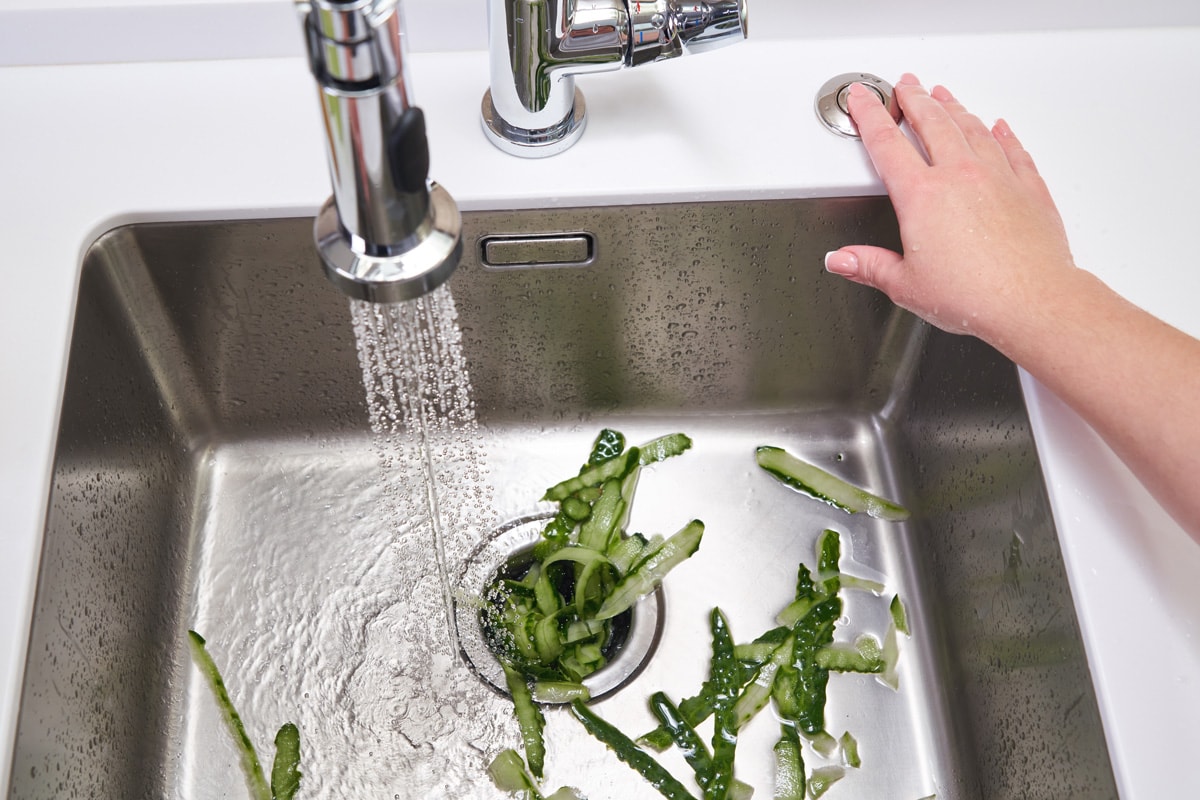
To make sure your garbage disposal unit lasts long before any need for repair, here are some things to note when using your unit:
- Never run your garbage disposal without running water through it.
- Flush only with cold water. This allows the disposal unit to grind the solidified fats and oils early on, and avoid pipe build-ups.
- Do not overwork your unit. Feed small pieces of food into the grinder one at a time.
- Keep your sink free from small wares whenever you are disposing of food. This is to avoid accidentally introducing these items to your garbage disposal unit, and damaging your blades.
- As much as possible, avoid grinding wastes that might clog your disposal unit.
Here is a topic that might interest you: How Long Does a Garbage Disposal Last?
Conclusion
Clogs are the likely culprit in garbage disposal units that do not drain well. If this happens to you, there are things you can do to fix it. More importantly, there are steps we can take to avoid the inconvenience of a clogged sink entirely. However, mechanical problems are best left to the pros.
Other related topics:
How To Clean A Kitchen Sink Drain And Stopper
Can You Install a Garbage Disposal in Any Sink?
Where Is The Best Location For Garbage Disposal Switch?




